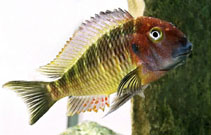
Tropheus moorii
FAMILY
Cichlidae
TAXONOMY
Tropheus moorii Boulenger, 1898, Kinyamkolo, Lake Tanganyika,
Africa.
OTHER COMMON NAMES
English: Brabant cichlid, moorii; German: Brabantbuntbarsch.
PHYSICAL CHARACTERISTICS
Maximum length 5.7 in (14.5 cm). Moderately deep bodied,
with blunt head and snout and down-turned mouth. Bicuspid
outer row of teeth, tightly spaced. Exhibits wide range of geographical
color variation, with populations ranging from uniformly
dark brown with vertical bars to brilliant yellow with
red fins.
DISTRIBUTION
Patchily distributed along the southern shores of Lake Tanganyika,
Africa.
HABITAT
Shallow inshore waters with rocky substrate.
BEHAVIOR
Sometimes forms large schools composed of hundreds of individuals,
which patrol rocky habitats in search of algal mats.
Males are territorial, and will defend feeding territories.
FEEDING ECOLOGY AND DIET
Tears strands of algae from rocks.
REPRODUCTIVE BIOLOGY
Maternal mouth brooder; after laying 5–17 eggs, female collects
them in her mouth and positions herself near male’s genital
area to receive sperm. Fertilization takes place in female’s
mouth. Eggs hatch after about four weeks. Females continue to
guard offspring for a few days after they are first released from
the mouth.
CONSERVATION STATUS
Not listed by the IUCN.
SIGNIFICANCE TO HUMANS
Popular in the aquarium trade.
Photo Gallery of - Blunthead cichlid

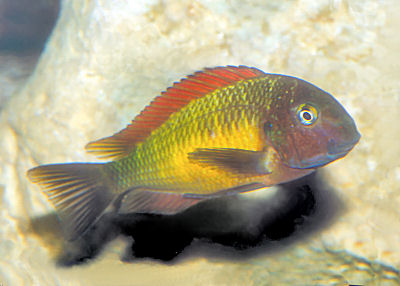
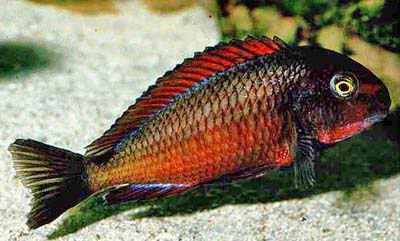
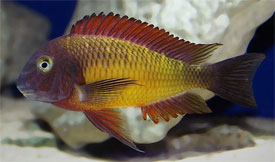
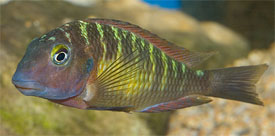
 Animalia Life
Animalia Life